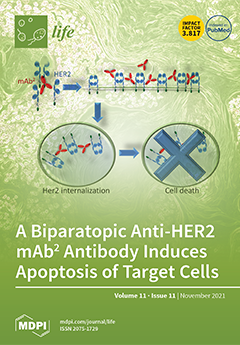The surveillance data on antibiotic resistance of
Haemophilus influenzae have shown that strains with non-enzymatic resistance to β-lactam antibiotics have been on the rise in the Czech Republic over the last decade. This type of resistance is more difficult to detect than β-lactamase
[...] Read more.
The surveillance data on antibiotic resistance of
Haemophilus influenzae have shown that strains with non-enzymatic resistance to β-lactam antibiotics have been on the rise in the Czech Republic over the last decade. This type of resistance is more difficult to detect than β-lactamase production. Analysis of 228
H. influenzae strains revealed that isolates with non-enzymatic resistance to β-lactams due to mutations in the
ftsI gene could be reliably demonstrated by single run testing of susceptibility to amoxicillin/clavulanic acid (sensitivity of detection is 84.6%), cefuroxime (92.6%), ampicillin and penicillin (both 95.7%). Thirty-seven different amino acid substitution combinations were detected in the PBP3 protein at 23 positions (V329I, D350N, S357N, A368T, M377I, S385T, A388V, L389F, P393L, A437S, I449V, G490E, I491V, R501L, A502S, A502T, A502V, V511A, R517H, I519L, N526K, A530S, and T532S). The most common combination (35%) of amino acid substitutions was the combination D350N, M377I, A502V, N526K. Epidemiological typing does not indicate a clonal spread of a particular MLST type. Altogether there has been detected 74 STs. The most prevalent ST 1034 was associated mainly with a combination D350N, M377I, A502V, N526K. Clonal analysis revealed six clonal complexes (CCs) with the founder found, eight CCs without founder and 33 singletons.
Full article






